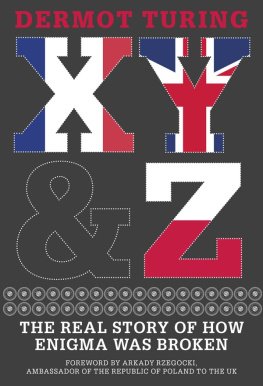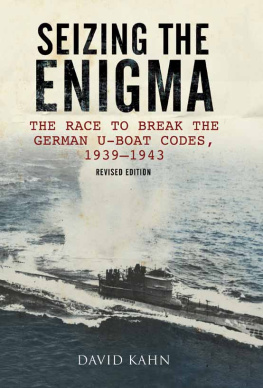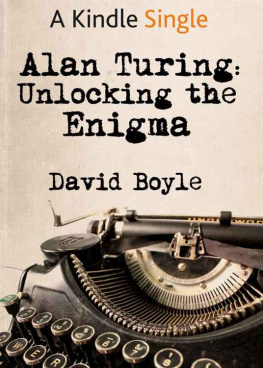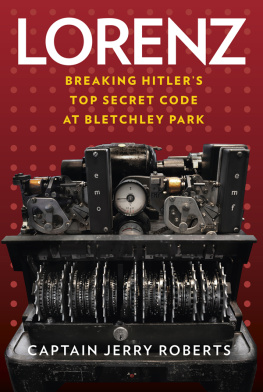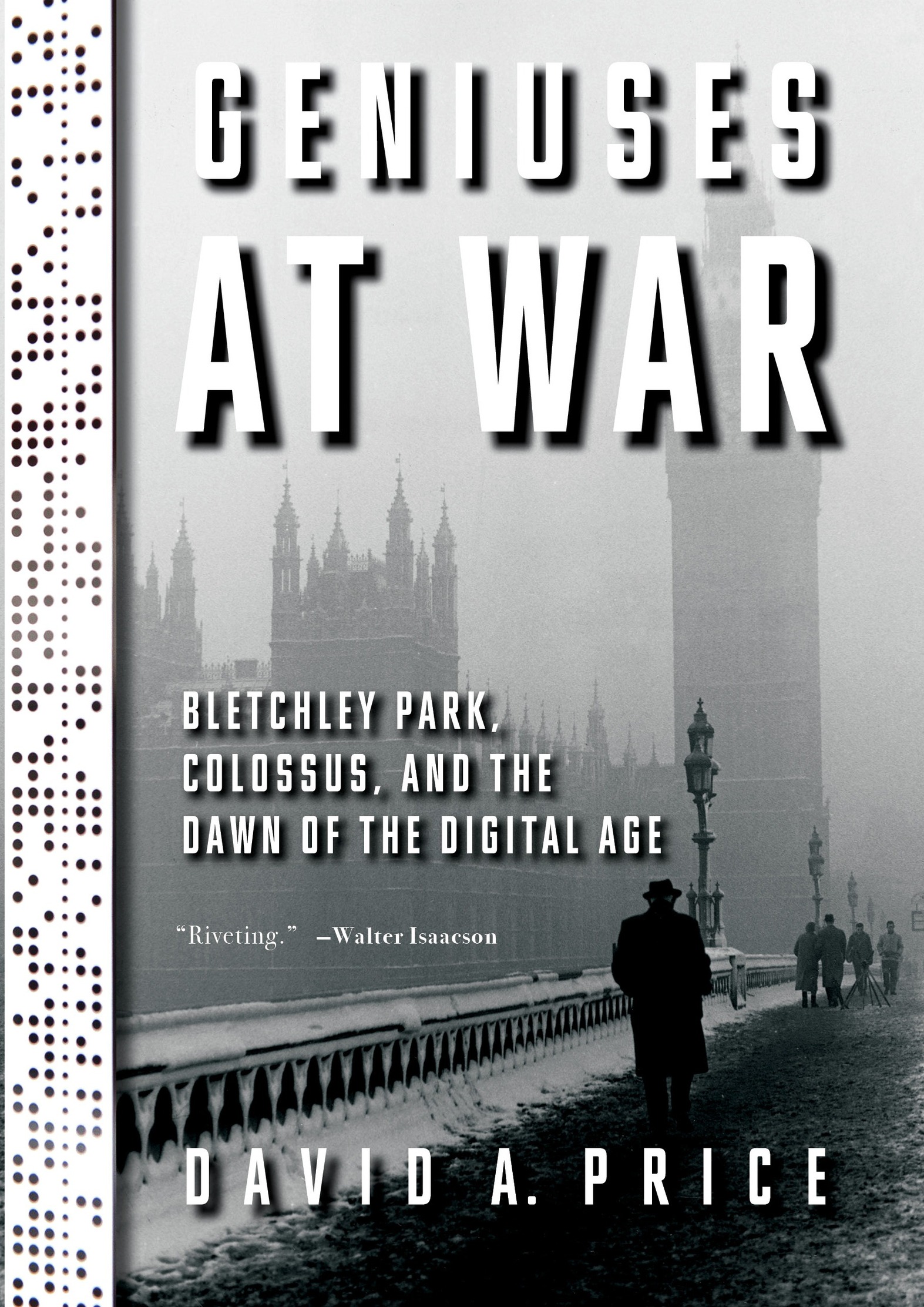Also by David A. Price
The Pixar Touch
Love and Hate in Jamestown
THIS IS A BORZOI BOOK PUBLISHED BY ALFRED A. KNOPF
Copyright 2021 by David Andrew Price
All rights reserved. Published in the United States by Alfred A. Knopf, a division of Penguin Random House LLC, New York, and distributed in Canada by Penguin Random House Canada Limited, Toronto.
www.aaknopf.com
Knopf, Borzoi Books, and the colophon are registered trademarks of Penguin Random House LLC.
Library of Congress Cataloging-in-Publication Data
Names: Price, David A. (David Andrew), [date] author.
Title: Geniuses at war : Bletchley Park, Colossus, and the dawn of the digital age / by David A. Price.
Other titles: Bletchley Park, Colossus, and the dawn of the digital age
Description: First United States edition. | New York : Alfred A. Knopf, 2021. | A Borzoi book.Title page verso. | Includes bibliographical references and index.
Identifiers: LCCN 2020050887 | ISBN 9780525521549 (hardcover) | ISBN 9780525521556 (ebook)
Subjects: LCSH: CryptographyGreat BritainHistory20th century. | Lorenz cipher system. | Bletchley Park (Milton Keynes, England)History20th century. | World War, 19391945Electronic intelligenceGreat Britain.
Classification: LCC D810.C88 P75 2021 | DDC 940.54/8641dc23
LC record available at https://lccn.loc.gov/2020050887
Ebook ISBN9780525521556
Cover images: London, Chronicle / Alamy; tape (left), Bletchley Park and the National Museum of Computing, Milton Keynes, Buckinghamshire, England by Brian Harris /Alamy
Cover design by Chip Kidd
ep_prh_5.7.0_c0_r0
Real mathematics has no effects on war. No one has yet discovered any warlike purpose to be served by the theory of numbers or relativity, and it seems very unlikely that anyone will do so for many years.
G. H. Hardy, A Mathematicians Apology (1940)
Contents
Prologue
During long stretches of the war against Hitler, German bombs were a part of day-to-day life in British cities. The Fhrers first air campaign against British civilians, known to Britons as the Blitz, lasted from September 1940 to May 1941 and led to the dropping of tens of thousands of tons of explosives across the country. London alone was hit by seventy-one major Luftwaffe raids. The bombers were back over Britain in February through May 1944 with Operation Steinbock, the so-called Baby Blitz. The following month brought the V-1swinged drone aircraft, of which the Germans launched more than ten thousand across the English Channel. The deep growl of a V-1s engine in the sky above was unnerving to hear. Yet as long as you could hear that sound, it was said, you had nothing to worry about; what you didnt want to hear was the engine becoming silent, a signal that the machine was about to dive and detonate its 1,870-pound payload. In September, the V-1s would be joined in the air by the V-2, a supersonic missile developed by a team under the rocket engineer Wernher von Braun. Fired from mobile launchers, more than a thousand V-2s would reach England, around half of them striking London. Over the course of the war, roughly 52,000 people in Britain were killed by bomber raids and another 8,500 by V-1s and V-2s.
In contrast, fifty-five miles to the northeast of London, in rural Buckinghamshire, the town of Bletchley remained outwardly quiet, even serene. A visitor to its center of activity, an estate known as Bletchley Park, would have found an unprepossessing Victorian-era mansion, a patchwork of architectural styles that appeared to have been tossed together to suit the eccentric whims of a rich former ownerwhich was, in fact, the case. Near the mansion on the estates fifty-eight acres was a lake with ducks and geese. Herds of deer roamed the grounds.
Also sharing the grounds were two dozen or so low buildings. Some were long wooden huts with whitewashed exteriors, several of them enclosed by five-foot blast walls for protection against bombings. The blast walls were unnecessary, as it turned out, because the Germans never learned of the work taking place within: Bletchley Park was the home of the British signals intelligence agency, which had the cover name of Government Code and Cypher School, or GC&CS for short. Its main task was reading intercepted radio messages of the Third Reichs military, messages shrouded with advanced encryption methods that the Nazis believed to be, for all practical purposes, impenetrable.
Intelligence about an opponents capabilities and intentions has always been central to the waging of warand cryptography, or decoding, has long been central to intelligence. But World War II was a cryptographic war like none before it. Hitlers lightning warfare tactics and his reliance on U-boats meant that his far-flung forces had to use radio to receive their orders and report back. Accordingly, German engineers created machines with advanced encryption technology to safeguard those radio messages from prying enemy ears.
It is widely known that around a third of the way through the war, Bletchley Park unlocked the secrets of one of those creations, the Enigma family of encoding machines. In Hut 8, a team led by British chess champion Hugh Alexander and a twenty-seven-year-old Cambridge-trained mathematician, Alan Turing, successfully attacked the version of Enigma used by the Kriegsmarine, the German navy, saving Britain from the U-boat menace during the Battle of the Atlantic. Their work enabled the Allies to lift the grip of the U-boats that had come close to strangling Britain by cutting off the flow of its supplies. Bletchley Park was able to read naval Enigma traffic temporarily in 1941 and permanently starting in late 1942; the victory was made possible by a mechanical device, principally of Turings invention, known as the Bombe, which mimicked the operation of a series of Enigma machines lashed together. The attack on Enigma has been documented and dramatized (sometimes quite fancifully) over the years in books, plays, the 2001 film Enigma, and the 2014 film The Imitation Game.
What is little known is the story that came nextlittle known because postwar security restrictions kept it hidden for decades, with major parts of it remaining classified until the twenty-first century. The conquest of Enigma was only a warm-up. A different section of Bletchley Park, known as the Newmanry, would become the site of the greatest decryption achievements of the war and the launch of the digital age.
Behind that success were the contents of two low buildings, newer and larger than the huts, made of brick, concrete, and steel. Known as Block F and Block H, the structures contained one of the Allies most guarded secrets, second perhaps only to the Manhattan Project: messages between Hitlers headquarters staff and his generals in the field were being cracked by a new kind of technologydigital electronic computers. The breakthrough yielded, among other things, intelligence that was essential to the D-Day landing.
At this time, even the word computer itself did not exist in reference to machines and would not for some years; the term was reserved for human beings whose job was to carry out long sequences of calculations by hand. Bletchley Parks electronic computers were called Colossus (plural, Colossi); they shared the binary logic of modern computers, though they were programmed via a plugboard rather than software stored in memory. The machines were not only the first operational digital electronic computers, they were the first large-scale digital electronic devices of any kind.



